Promptly at 8:40am ET, leading off the first of two full days of discussion about patent quality, the new Deputy Commissioner for Patent Quality, Valencia Martin-Wallace, welcomed the live audience at the United States Patent and Trademark Office, as well as those watching the live webcast of the event.
Martin-Wallace quickly gave way to USPTO Director Michelle Lee, who has been talking about patent quality ever since she assumed the position of Deputy Director. Indeed, this Patent Quality Summit has been long in the works and the initiative will seek to forward her vision of a fair and balance process that will lead to greater quality, not simply greater numbers of rejections (more on this later).
Lee began the substance of the day by briefly reviewing the six proposals for patent quality contained within the Federal Register Notice. These six proposals, or areas of emphasis, are:
- USPTO proposes a mechanism for an applicant to request the Office of Patent Quality Assurance to review an examiner’s Office action during prosecution.
- USPTO is seeking input on whether to conduct automated pre-examination searches for all applications, and if so, what tools might be used to complete those searches.
- USPTO is seeking the public’s assistance in identifying ways to enhance the clarity and completeness of the official record during prosecution of an application.
- USPTO is considering ways to measure and enhance the effectiveness of examiner training, and how best to improve quality metrics.
- The USPTO is seeking input to help determine whether the current compact prosecution model should be modified. In particular, is seeking ideas for proactive alternatives to Requests for Continued Examination filings and appeals to the Patent Trial and Appeal Board.
- The USPTO is considering the viability of enabling applicants to have in-person interviews with examiners, regardless of the examiner’s duty station.
“If I’ve learned anything from my time in the labs and at Google, it’s that no idea is a bad idea,” Lee told the audience. “Let’s get all of your ideas on the table, whether you are here in person or online, we want to hear your ideas.”
Then the first news of the day came just before 9am ET. Director Michelle Lee, who it seemed would provide the type of introduction that one might expect, nothing earth-shattering and merely setting the table for the day ahead, then introduced Russell Slifer as the new Deputy Director of the USPTO. Slifer, who was in attendance and would later moderate a panel, was sworn into his new position just this morning.
The appointment of Slifer means that the Denver Satellite Office is now looking for a new Regional Director. But what is the Denver Office’s loss becomes the USPTO’s gain. In Slifer the USPTO senior management team acquires a patent attorney with 20+ years experience, including 8 years as Chief Patent Counsel for Micron Technology. Slifer also has experience representing independent inventors and universities, giving him a well-rounded view of the patent system. His experience and perspective should compliment what is a very strong USPTO senior level team.
But the topic of the day is patent quality. The first segment of the event today saw several individuals deliver remarks about patent quality, including Manny Schecter (IBM’s Chief Patent Counsel), Professor Dennis Crouch (PatentlyO), Robert Budens (POPA President) and retired Federal Circuit Chief Judge Paul Michel, among several others.
“Patent quality is not invention quality… they relate to each other, they impact each other… but patent quality is its own unique thing,” Schecter explained to lead off the presentations. “The thing we need to remember is that we cannot pick up a patent and quick and easily determine if a patent meets those statutory requirements… we have to look for indicia that the applicant and the examiner working together facilitated a robust patent examination so that all of the issues that one thinks need to be addressed in that application are addressed.” Schecter would go on to say, “patent quality is a shared responsibility, not just on the USPTO,” which was a viewpoint shared by all the speakers. “Years after I get that patent… I want to know that the patent is going to survive all the scrubbing that the patent will undergo, both by my organization and others.”
Speaking next was Professor Crouch, who jokingly explained that the perception of many in the industry has not changed over the years. Many years ago it was said that the only valid patent was one that the Supreme Court hadn’t seen, acknowledging in at least some regards that still hasn’t changed. He would go on to talk about the importance of building an accurate record and having a meaningful, explained claim construction, which would enhance quality. “My first recommendation,” Crouch said, “is that ambiguity is something that does materially affect patentability.” He also advocated a new post grant type of review whereby the Patent Office would be involved with interpreting claims, which then presumably would be given some weight by District Courts during litigation. Crouch also said the public needs to continue to push the Patent Office to operate in an open and transparent way.
Robert Budens, the President of the USPTO union – POPA – was next. He started his remarks jokingly by expressing at least some unease that it was he on the platform with Commissioner Focarino and Director Lee in the audience. He said that felt a little unnatural, explaining he is much more comfortable with them at a podium and him there to raise questions on behalf of the union.
After starting in that light-hearted way, Budens focused in on the issues with laser-like accuracy. He told the audience the old, only partially apocryphal, saying about patent quality is this: “Good quality is when the USPTO issues my patent applications and rejects the patent applications of my competitors.” He used this as a way to describe the difficulty the Office faces. This also aptly describes the schizophrenic manner in which some companies both vilify the system and collect patents as if they are going out of style.
“We don’t have a problem generating statistics, we have a problem producing statistics that are meaningful to you,” Budens explained. He would go on to echo what others have said – “patent quality is a shared responsibility.” He said placing the responsibility only on patent examiners is wrong and won’t lead to the patent quality that stakeholders and the public want and deserve. “Improvement of patent quality must start at the beginning of the process,” Budens explained. He would go on to use the phrase “garbage in, garbage out,” to explain why there should at times be little surprise that the examiners First Action misses the mark in the perspective of the applicant and additional examination is required when changes are made.
Toward the end of his remarks Budens focused in on what has been the elephant in the room for many years, at least with respect to the issue of patent quality. He said:
An earlier rendition of the so called quality initiative was actually crammed down examiners throats by USPTO management and ultimately created a culture of fear in the agency that still lingers in the psyche of those within the examining core who lived through those early 21st century years. While some of those initiatives proved unworkable, just as POPA predicted, the damage done by those initiatives to examiner confidence and morale has proven much more long lasting. Hence the fear and depredation that already permeates through the examining core as these discussions of new quality initiatives drudge up old memories from the depth of examining history.
There is no doubt that the agency is still suffering from the “no patent for you” era during the Bush Administration. Examiners that came of age during those times philosophically saw themselves working for the Patent Denial Authority because they were incentivized to reject applications as the result of “second pair of eyes” review. Although there was no policy that demanded rejections, examiners got the hint when emphasis was clearly placed on making sure that no mistakes left the Office. That led to an emphasis on increased scrutiny and a culture that rewarded examiners who aggressively played gatekeeper. It also created the enormous backlog that the USPTO still struggles with today.
“Going forward, the participants of this quality summit and all USPTO stakeholders need to understand that quality examination is not without cost,” Budens further explained. “As the old manufacturing maxim states, ‘we can make it cheaper, better or faster. Which two do you want?’ Quality is not free.”
Judge Michel also had some very interesting thoughts on patent quality. First, he wasn’t entirely comfortable using the term “patent quality,” explaining that it isn’t helpful to think of patents as coming in different varieties of low, medium and high quality. “It does not really get us anywhere,” Michel said. “At the end of the day it is a binary question: the patent is valid or it is not valid. Or more particularly, the claim is valid or it is not valid. So when we talk about patent quality, maybe we should really be thinking about claim quality, one claim at a time.”
Judge Michel also explained that in his view it is more helpful to think of patent examiners are “an adjudicator” because examination “is a process for making a legal determination based on technological documents.” He would later say that while patent quality is an issue for everyone, at the end of the day it is up to patent examiners to be on the front lines and make those determinations. Michel would also “put in a huge plea to the examining core, the SPE’s and the top management to give much greater emphasis than I have ever seen before on section 112.”
After the conclusion of the presentations a panel discussion ensued and questions were taken from the audience. I took the opportunity to ask the first question from the live audience, and picked up on what Budens had said earlier.
As I began speaking I explained that what I was going to say was more of a comment than a question, but I hoped the panel would provide their thoughts. I started by acknowledging that it is difficult to argue with the desire for increasing patent quality, yet there are some within the industry, particularly those in the patent bar who have lived through previous USPTO emphasis on “patent quality,” that have concerns. I have not seen or heard anything that suggests this round in the debate of how to improve patent quality has as its goal coming up with new and creative ways to reject applications. However, in the past “patent quality” has been at times synonymous with rejecting patent applications faster. At the time there was a “culture of fear” within the Patent Office, as Budens called it, there was a very different culture of fear outside the Office because in many areas applicants couldn’t get anything issued. Thus, within the patent bar there are many who are suspicious whenever the discussion turns to patent quality. They are not yet ready to dip their toe into the water. This needs to be considered and if that is not the case effort should be made to hear those concerns and address them head on.
 Budens took the opportunity to address this issue saying that POPA has met with PTO management leading up to the Patent Quality Summit because of that culture of fear that existed in earlier years. “I have not yet seen a sense, in my discussions with management this time, that is a direction that management wants to go,” Budens explained. “I don’t think examiners are really wanting to go out there and throw out patents as fast as you can. We share concerns with everyone about the recent decisions – Mayo, Myriad and Alice – that dramatically and negatively impact what we are doing with patent eligibility… I don’t have a sense that any of us want to become the US rejection office, which the Office may have become for a time 10 years ago.”
Budens took the opportunity to address this issue saying that POPA has met with PTO management leading up to the Patent Quality Summit because of that culture of fear that existed in earlier years. “I have not yet seen a sense, in my discussions with management this time, that is a direction that management wants to go,” Budens explained. “I don’t think examiners are really wanting to go out there and throw out patents as fast as you can. We share concerns with everyone about the recent decisions – Mayo, Myriad and Alice – that dramatically and negatively impact what we are doing with patent eligibility… I don’t have a sense that any of us want to become the US rejection office, which the Office may have become for a time 10 years ago.”
Slifer, who was moderating the panel, took the opportunity to explain that this quality initiative has no agenda and is not going to be focused on rejecting applications. “Certainly that is not the view of the leadership of the USPTO,” said Silver. “We are really understanding the balance and the important job that we do at the PTO with respect to the innovation economy,” he explained. “We have a sincere desire to improve the quality of the patents that issue and ensure that the patents that should issue are issuing.”
I had a brief opportunity to speak with Lee and Slifer after the morning concluded, as is typical at these types of events. PTO brass will speak with everyone, which is one of the reasons attending these sessions is so useful to the community, and to Office personnel.
In any event, during this brief encounter it dawned on me that the last time patent quality was being discussed the leadership of the Office had not come from the private sector, but rather came from within government ranks. Running the USPTO today are two people with substantial private sector experience and knowledge about how patents are used. This bodes well for the future, and is no doubt why so much of the focus on patent quality today was on issuing patents that deserve to be issued.
Obtaining patent claims that are extraordinarily broad serves no purpose. As Gary Michelson once explained to me, “why would I want a claim that is invalid? That doesn’t help me. I want the broadest valid claim.” And if this patent quality initiative focuses on patent quality through that lens everyone should benefit.
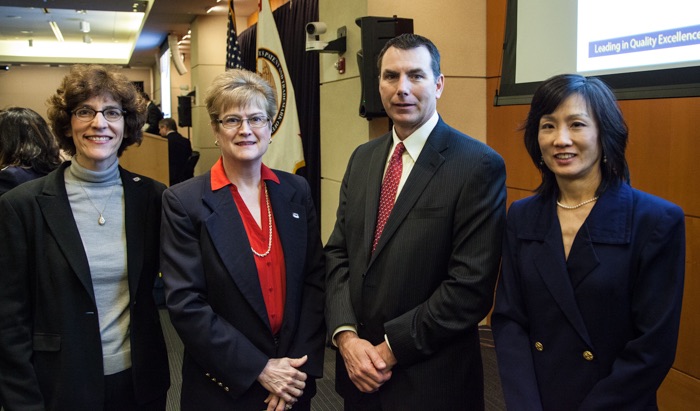
After the morning session concluded, posing for a group picture from left to right: Sharon Israel (AIPLA President), Lisa Jorgenson (AIPLA Executive Director), Russel Slifer (USPTO Deputy Director) and Michelle Lee (USPTO Director).

![[IPWatchdog Logo]](https://ipwatchdog.com/wp-content/themes/IPWatchdog%20-%202023/assets/images/temp/logo-small@2x.png)

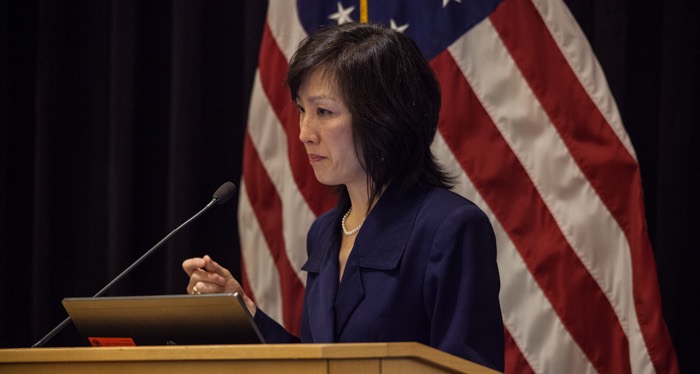
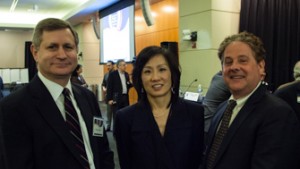
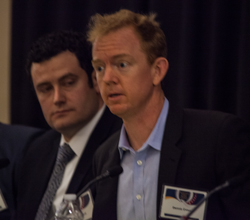
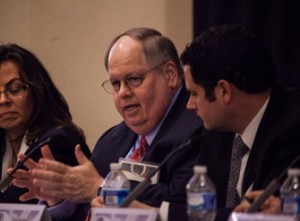
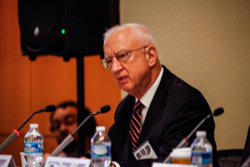
![[Advertisement]](https://ipwatchdog.com/wp-content/uploads/2024/04/UnitedLex-May-2-2024-sidebar-700x500-1.jpg)
![[Advertisement]](https://ipwatchdog.com/wp-content/uploads/2024/04/Artificial-Intelligence-2024-REPLAY-sidebar-700x500-corrected.jpg)
![[Advertisement]](https://ipwatchdog.com/wp-content/uploads/2024/04/Patent-Litigation-Masters-2024-sidebar-700x500-1.jpg)

![[Advertisement]](https://ipwatchdog.com/wp-content/uploads/2021/12/WEBINAR-336-x-280-px.png)
![[Advertisement]](https://ipwatchdog.com/wp-content/uploads/2021/12/2021-Patent-Practice-on-Demand-recorded-Feb-2021-336-x-280.jpg)
![[Advertisement]](https://ipwatchdog.com/wp-content/uploads/2021/12/Ad-4-The-Invent-Patent-System™.png)






Join the Discussion
9 comments so far.
aldo
March 27, 2015 07:44 pmpatent quality is ultimately defined by the predictability it enables in the marketplace, the fairness it provides for all entities & the benefits it enables for society… at best that is a dynamic process that requires a more fluid inclusive process.
the pto should be a traffic cop enabling fairness in the flow of technology, not a dam in search of a elusive gold standard patent. the backlog itself distorts market behaviors…
the current fifo (first in first out) system needs to be re-thought with more marketplace input directing pto resources…
balance between entities of very different size and resources needs to be restored…
google has the technology to enable more beneficial & fair ip systems…
blessings & be safe,
aldo
x-it inventor
big lather inventor
advocate
Paul F. Morgan
March 26, 2015 03:53 pmIn response to “Curious” above, the PTO has its own enhanced, additional, claim “ambiguity” burdens that I doubt if you see as often in patent litigation. Half of all U.S. applications are now of foreign or pro se origin, many filed with raw-machine-translation claims or other ambiguity sources. Many other applications these days are initially filed with claims written with no clue as to the prior art. This makes prior art searching and compact prosecution difficult, and leads to extensively rewritten claims in the issued patent. Some of those claims may have have 112 support issues as well as ambiguity issues.
The PTO could more often refuse to examine applications until the claims are rewritten in proper English and in compliance with proper claim drafting requirements.
Paul F. Morgan
March 26, 2015 03:32 pmHere is a serious PTO quality issue I have yet to see discussed by others: the inability of the PTO to tell the difference between publicly important work and less important work, and act accordingly: It has been obvious to anyone patent-savvy for generations that reissue applications, reexaminations, long-pending “submarine” applications, and interference requests, for example, frequently involved applications of high public importance, and thus should get high and thorough processing priority, but instead are allowed to stuffed under work piles of far less important applications, or even allowed to be completely ignored. Only in recent years has this situation even started to improve, with some internal reassignments. Congress had to impose statutory time deadlines on PTO AIA post-grant proceedings for them to be effective.
American Cowboy
March 26, 2015 03:07 pmIronically, todays later IPWatchdog article highlights the uncertainty spawned by Scotus in Alice, to wit: “The fact is, patent examiners are struggling with the application of 35 USC 101 in light of the Alice decision just as much as everyone else. Greater uncertainty among both patent applicants and patent examiners surely increases the likelihood of disagreement between them…”
Shows that Scotus is undermining reliability and undermining quality.
Night Writer
March 26, 2015 01:55 pmGet outside help. Start outsourcing patent examination. At least the searches.
American Cowboy
March 26, 2015 10:03 amMaybe the search should be for patent “reliability.” Can the patent owner and others rely on the patent to define a protected invention with enough clarity so that they know what infringes and what doesn’t, and can they rely on the patent to be enforced by the courts and PTAB to protect that defined invention when challenged? If the answer is yes, then you have reliability and quality.
Of course, as Curious suggested, if there is enough money at stake, the infringer will conjure up arguments out of thin air. The fact that some white shoe litigator makes the argument is deemed to give it some credibility.
We also have the inherent problem that we are relying on words to define things that are not words. There will inevitably be a mismatch, and the scrivener needs to be given a break now and then. Look at how the Brain Trust called Congress writes legislation that those white-shoed folks find ways to misinterpret.
Paul F. Morgan
March 26, 2015 09:24 amI certainly agree with J. Michel’s comment to: “put in a huge plea to the examining core, the SPE’s and the top management to give much greater emphasis than I have ever seen before on section 112.”
There are too many issued patent claims with no specification 112 enablements for claim elements inconsistently alleged to be novel and unobvious. Yet I am told that the PTO actually discourages examiner rejections on that basis?
Furthermore, his suggestion equally applies to the judicial system. How many S.J. decisions on 112 non-enablement have we seen granted and sustained by the Fed. Cir.? For that matter, what percentage of S.J.s are granted for claim ambiguity, even after Nautilus?
Curious
March 25, 2015 11:13 pmHe told the audience the old, only partially apocryphal, saying about patent quality is this: “Good quality is when the USPTO issues my patent applications and rejects the patent applications of my competitors.”
He nailed it there and shows the problem with defining “quality” as that different entities can define a “quality” patent completely differently.
Curious
March 25, 2015 11:08 pmCrouch said, “is that ambiguity is something that does materially affect patentability.”
He has been on this kick for years. However, as I have attempted to explain (when I participated in that forum), litigators are paid (BIG BUCKS) to kick up dust with regard to every possible claim limitation. The fact that someone can allege that a term is “ambiguous” doesn’t make it so. In my limited experience with litigation (I avoid it like the plague), I’ve seen litigators allege that even painfully clear language is ambiguous.
While being an imperfect medium by which to describe an invention, English is still the best medium. Adding explicit definitions within specifications for terms in the claims only push the analysis down to asserting that the words in the definition are ambiguous — there is no end.